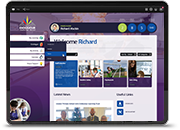Latest News

Elevate your training from ‘good’ to ‘great’!
27/7/21
Frog Education
Training people is far from easy, considering different learning styles, environments and often delivering content that is important but may be uninteresting to the audience.
So, what makes training content go from ‘good’ to ‘great? We share 7 tips to help get the ideas flowing…
1. Bite sized chunks, with time for consolidation
Information overload is one of the main reasons for training not hitting home. You can give as much information as you like but if it isn’t going in…you’re wasting your time.
When we are learning, our brains need time to breathe. We need space to process the information and consolidate what we’ve learned.
Deliver training in friendly portions, that are easy to engage with and digest. Remember! The space between the chunks of information is as important as the information itself.
2. Knowledge checks
Good training practise understands the benefits of knowledge checks. There are three big benefits to incorporating regular knowledge checks:
-
Assessment. The trainer can gauge the effectiveness of the course (and make improvements where necessary), while supporting all learners in their individual understanding. Assessment can also provide a “breathing period” for the learner, to allow conscious downtime and for spaced learning to take place.
-
Consolidation. The individual learner can build “cognitive stability” (otherwise known as understanding!) by being confident in the integrity of their own learning scaffold. Or in more simple terms, the learner can build on their understanding in the knowledge that it is correct.
-
Motivation. Knowledge checks let us know when we are on the right track – and that we have achieved something in our learning. That satisfying sense of achievement is the neurotransmitter dopamine at work. Dopamine also increases focus and motivation and supports further learning. It’s a big win!
Be sure to include meaningful knowledge checks in your training.
3. A variety of learning activities
We’ve all heard the phrase “Death by PowerPoint”. This annihilation of the soul in your learners can be easily achieved, whether you are using PowerPoint or any other medium.
The point is to keep your training rich, with different learning objects, styles, media and activities. This relates to delivering training in bite-sized chunks. If we move our learners through different cognitive environments – including reading, watching, listening, browsing, critiquing, socialising and delivering, to name just a few – we do wonders for synaptic enhancement. It stops them from going to sleep, too.
Keep training rich and varied to keep your learners engaged!
4. Social learning
A bit about the neurotransmitters…
Social engagement releases Serotonin, which is a “feel good” hormone. When we learn in a social context, there is a real danger we will actually enjoy the learning! How about that? Serotonin also helps us to focus.
But it is not just about feeling good and keeping focused. Learning in a social context is a key way to consolidate our own understanding and, in the gaps between transmission and reception, to practise spaced learning in a profound way.
Try to incorporate collaborative and social activities into your training, to lift it up a gear.

It is not the performance of a trainer in any given session. It is the effect the training has on the learner's neurology that makes the difference between training that has an impact, and that which does not.
5. Keep it relevant and on point
In some training courses, activities can be carried out ‘just for the sake of it’. Information often shared, ‘just for the sake of it’. Knowledge checks incorporated, ‘just for the sake of it’.
Good training programmes recognise that training doesn’t have to be long or torturous to be effective. Good training is all about getting the skills and understanding across in the most effective way.
Make sure everything you do in your training is done for a purpose that you can articulate.
6. Give rewards
Rewards can take many forms. They may be the internal rewards that come from passing knowledge checks, during the course of a training programme. They may be the personal rewards that come from social interaction happening within the context of training. They may be prizes, points or certificates.
Whatever form they take, rewards have a very real chemical impact that increases engagement, focus, capacity for learning and motivation.
Try to incorporate rewards in your training.
7. Make sure it is accessible!
Once you’ve developed your fantastic training course (and let’s face it – based on the principles above, it WILL be fantastic), you are home and dry. You know that your training will have an impact and you are going to drive it home into your learners.
All you have got to do now is make sure everyone can access it. You just need to make it available at times that fit in with people’s busy schedules. And make it available in places that everyone can get to. And make it work for the people that need and want to learn.
Think about how you can deliver your training to maximise its reach and leave nobody behind.
Phone 01422 250800
Email hello@frogeducation.com
DROP US A MESSAGE...


 Apprenticeships
Apprenticeships Construction
Construction Education Tech
Education Tech Engineering
Engineering Franchise Networks
Franchise Networks Legal Firms
Legal Firms Logistics
Logistics MATs
MATs Recruitment
Recruitment Retail
Retail Seasonal Staff
Seasonal Staff


